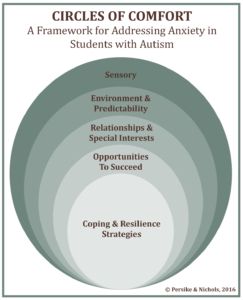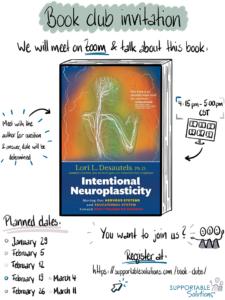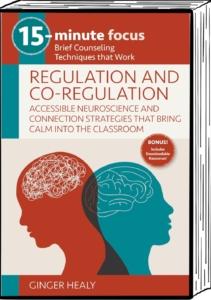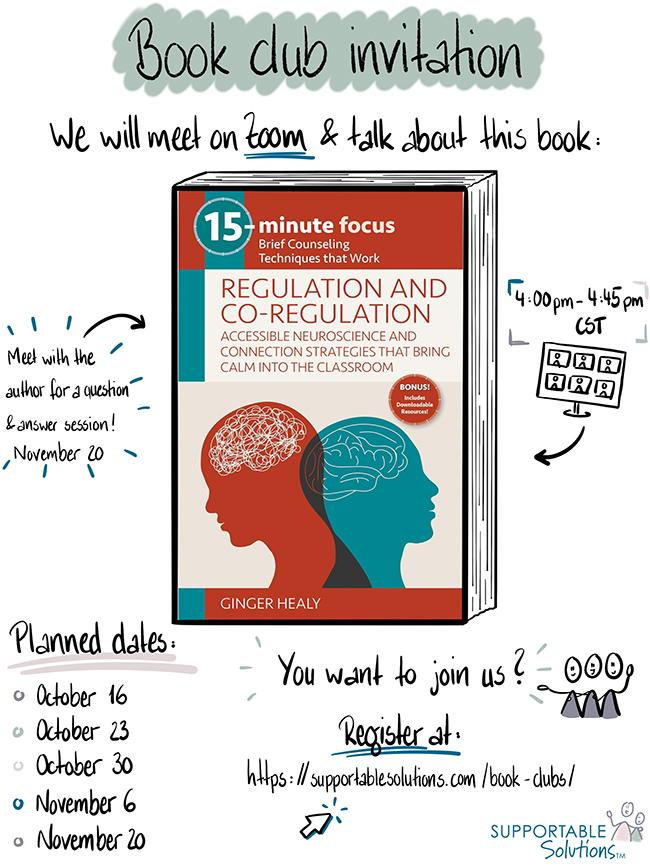 Overview: Approximately 50% of students with autism have a diagnosed anxiety disorder. Participants will learn why anxiety affects individuals with autism as well as how to support the anxiety. The Circles of Comfort© Framework utilizes what we know about our learners with autism to provide strategies to support and prevent anxiety as well as to teach coping and resilience strategies in order to help them manage their anxiety. Participants will leave with a clear understanding of what anxiety is and be provided with ready to implement ideas.
Overview: Approximately 50% of students with autism have a diagnosed anxiety disorder. Participants will learn why anxiety affects individuals with autism as well as how to support the anxiety. The Circles of Comfort© Framework utilizes what we know about our learners with autism to provide strategies to support and prevent anxiety as well as to teach coping and resilience strategies in order to help them manage their anxiety. Participants will leave with a clear understanding of what anxiety is and be provided with ready to implement ideas.
Audience: paraprofessionals, administrators, support staff, and teachers supporting students grades pre-kindergarten through highschool
Total Course Time: approximately 15 hours
Instructor: Connie Persike, M.S., CCC/SLP
References:
Anna Merrill, G. (2020). Anxiety and Autism Spectrum Disorders: Articles: Indiana Resource Center for Autism: Indiana University Bloomington. Retrieved 26 May 2020, from http://www.iidc.indiana.edu/pages/anxiety-and-autism-spectrum-disorders
(2020). Retrieved 26 May 2020, from http://www.positivepartnerships.com.au/autism-anxiety
Chalfant, A. (2011). Managing anxiety in people with autism (1st ed.). Bethesda, MD: Woodbine House.
Exercise for Stress and Anxiety | Anxiety and Depression Association of America, ADAA. (2020). Retrieved 26 May 2020, from http://www.adaa.org/living-with-anxiety/managing-anxiety/exercise-stress-and-anxiety
Jain, R. (2020). Online Programs for Children with Anxiety | Kids Anxiety Relief. Retrieved 26 May 2020, from https://gozen.com/
Kinnealey, M., & Fuiek, M. (1999). The relationship between sensory defensiveness, anxiety, depression and perception of pain in adults. Occupational Therapy International, 6(3), 195-206.
Lynch, C. (2019). Anxiety management for kids on the autism spectrum (1st ed.). Arlington: Future Horizons, Inc.
Paxton, K., & Estay, I. (2007). Counselling people on the autism spectrum (1st ed.). London: Jessica Kingsley Publishers.
Reilly, N. (2015). Anxiety and depression in the classroom (1st ed.). New York: W.W. Norton & Company, Inc.
Resources « National Autism Center. (2020). Retrieved 26 May 2020, from http://www.nationalautismcenter.org/resources/
Wilkinson, L. (2015). Overcoming anxiety and depression on the autism spectrum (1st ed.). London: Jessica Kingsley Publishers.
Winter-Messiers, M. (2007). From Tarantulas to Toilet Brushes. Remedial And Special Education, 28(3), 140-152.
A certificate of completion will be given when completed. Buyers have access to the training for one calendar year.
Free Resources
The Southern Regional Center For Children and Youth with Special Health Care Needs: Conversations on Showing Up for Kids! Anxiety
Community of Practice on Autism Spectrum Disorder and other Developmental Disabilities March 10th, 2020: Anxiety and ASD/DD: What we know and what can we do about it?






 Overview: Approximately 50% of students with autism have a diagnosed anxiety disorder. Participants will learn why anxiety affects individuals with autism as well as how to support the anxiety. The Circles of Comfort© Framework utilizes what we know about our learners with autism to provide strategies to support and prevent anxiety as well as to teach coping and resilience strategies in order to help them manage their anxiety. Participants will leave with a clear understanding of what anxiety is and be provided with ready to implement ideas.
Overview: Approximately 50% of students with autism have a diagnosed anxiety disorder. Participants will learn why anxiety affects individuals with autism as well as how to support the anxiety. The Circles of Comfort© Framework utilizes what we know about our learners with autism to provide strategies to support and prevent anxiety as well as to teach coping and resilience strategies in order to help them manage their anxiety. Participants will leave with a clear understanding of what anxiety is and be provided with ready to implement ideas. 
